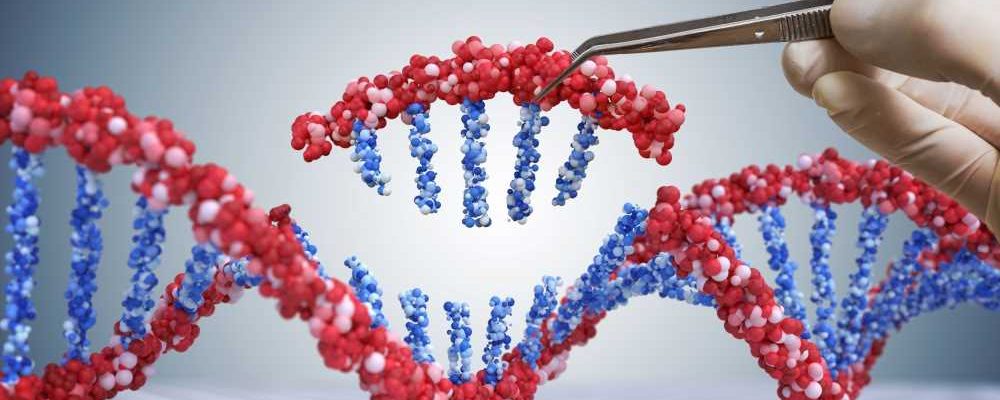Dual CRISPR-Cas3 is a promising tool to induce a gigantic genomic deletion and restore dystrophin protein
In a recent study published in Stem Cell Reports, researchers evaluated the use of a dual clustered regularly interspaced short palindromic repeats (CRISPR)-Cas3 system for inducing multi-exon skipping (MES) among Duchenne muscular dystrophy (DMD)-patient-derived induced pluripotent stem cells (iPSCs).
 Study: Dual CRISPR-Cas3 system for inducing multi-exon skipping in DMD patient-derived iPSCs. Image Credit: vchal/Shutterstock.com
Study: Dual CRISPR-Cas3 system for inducing multi-exon skipping in DMD patient-derived iPSCs. Image Credit: vchal/Shutterstock.com
Background
DMD is a severe muscle degeneration disorder caused by genomic mutations causing a dystrophin gene frameshift. Exon skipping is a promising approach to restoring the dystrophin protein, with the CRISPR-Cas9 system emerging as an emerging approach.
However, limited techniques exist to induce a large deletion to cover target exons spread over hundreds of kilobases.
About the study
The present study assessed the CRISPR-Cas3 system as a genome editing tool for DMD patients.
A two-color single-strand annealing (SSA)–based reporter system was developed for Cas3 to enhance the genetically edited cells, followed by distance analysis.
The multiplexing of Cas3-CRISPR RNAs (crRNAs) caused genomic MES. The best crRNA pairings for inducing MES in DMD-induced pluripotent stem cells were investigated, and a reporter method for enriching genome-edited cells was devised.
To investigate the off-target mutagenesis possibility, whole-genome sequencing (WGS) of the genetically edited clones was performed, followed by an investigation of deletions linked to potential CRISPR RNA binding regions.
A pair of crRNAs inwardly sandwiching the target genomic region was used for the analysis. The dual Cas3 approach was enriched using the SSA reporter vector system adapted for the dual Cas3.
The team also tested the deletion patterns induced by the inward dual-Cas3 with the 344-kb interval in human embryonic kidney (HEK)293T cells. Sequences with long spacers (0.5 to 1.7 kb) comprising the CRISPR RNA detection region were inserted to extend the target genetic sequence toward Cas3 deletion.
Double-nick-type SSA reporters were constructed to assess the genetic activities of both sides of CRISPR RNAs in the CRISPR-Cas3 system.
Further, the researchers investigated whether the use of greater than two CRISPR RNAs could increase the 340-kb deletion efficiency. Four CRISPR RNAs were developed with an interval of 110 kb, covering the 340-kb area, and 11 CRISPR RNAs targeted at the 11 exons positioned between exon 45 and exon 55.
Immunostaining and Western blot analyses were performed to assess dystrophin protein recovery, and reverse transcription PCR (RT-PCR) was used to confirm MES induction at the messenger ribonucleic acid (mRNA) level.
The dual-Cas3-based genome editing system and MES-induced subclones were investigated to determine the optimal combinations for MES induction in DMD iPSCs.
After transfecting of Cas9/single guide RNAs or Cas3/Cascade/CISPR RNA plasmid deoxyribonucleic acid (DNA) vectors, genomic copy counts at the midway points of crRNA pairs were evaluated by droplet digital polymerase chain reaction (ddPCR) to determine deletion efficiency.
PCR products were subjected to Sanger sequencing. Apart from the inward dual CRISPR-Cas3 system, researchers evaluated outward and parallel dual Cas3 orientations. Genomic targets were amplified using polymerase chain reaction primers located above exon 45 and below exon 55.
Genome editing using the dual CRISPR-Cas3 system was performed in DMD patient-obtained induced pluripotent stem cell lines FF12020, CiRA00458, and CiRA00646.
The team investigated whether the genetically edited population could be enhanced by sorting cells using the two-colored single-strand annealing reporter vectors among HEK293T cells.
To distinguish Cas3-mediated copy number variations (CNVs) from spontaneous ones, the team evaluated the distance of each detected CNV from the nearest potential CRISPR RNA binding sites.
Results
Dual crRNAs induced a large deletion at the dystrophin exon 45 to 55 area (340 kb) among HEK293T cells and in iPSCs, which could be applied to various DMD types. MES induction restored the dystrophin protein in DMD-iPSCs with three distinct mutations.
No significant off-target deletions were found at the putative crRNA binding sites. The inward-type dual CRISPR-Cas3 method effectively caused effective deletions of up to 344 kb among HEK293T cells and DMD patient-obtained iPSCs.
The two-colored single-strand annealing reporters facilitated the separation of cells with large genetic deletions. Dystrophin protein recovery did not match with the ddPCR results. The dual CRISPR-Cas3 system could induce MES in DMD iPSCs with several mutations and restore dystrophin, indicating the wide applicability of the CRISPR-Cas3 approach.
The on-target 344-kb deletion induced by dual-Cas3 was detected as a copy number variation (CNV) in the #7-1 and #4-3 clones. WGS analysis demonstrated no apparent off-target mutations related to the dual CRISPR-Cas3 system, indicating the high specificity of the dual-CRISPR-Cas3 system.
There was no significant difference in SNV/indels appearance frequency between NC2 and #7-1 or between NC2 and #4-3.
Conclusion
Based on the study findings, the dual CRISPR-Cas3 system can potentially induce large genomic deletions for inducing MES in DMD patients with mutational patterns. However, it has limitations such as variation in deletion patterns and inability to control precise start and endpoint.
Future studies should investigate methods to deliver Cas3 into cells to improve genome editing efficiency. Advanced phenotypic assays will be necessary to demonstrate the efficiency of the dual-Cas3mediated MES approach in myotubes after the differentiation of iPSCs.
These findings could inform strategy developers for treating DMD and other genetic disorders requiring extensive deletions.
-
Kita et al., (2023) Dual CRISPR-Cas3 system for inducing multi-exon skipping in DMD patient-derived iPSCs, Stem Cell Reports. doi: 10.1016/j.stemcr.2023.07.007. https://www.cell.com/stem-cell-reports/fulltext/S2213-6711(23)00295-3
Posted in: Molecular & Structural Biology | Genomics | Medical Science News | Medical Research News
Tags: Cas9, Cell, CRISPR, DNA, Duchenne Muscular Dystrophy, Dystrophin, Exon, Exons, Frequency, Gene, Genetic, Genome, Genome Editing, Genomic, Induced Pluripotent Stem Cells, Kidney, Muscle, Muscular Dystrophy, Palindromic Repeats, Plasmid, Polymerase, Polymerase Chain Reaction, Protein, Ribonucleic Acid, RNA, Sanger sequencing, Stem Cells, Transcription, Western Blot

Written by
Pooja Toshniwal Paharia
Dr. based clinical-radiological diagnosis and management of oral lesions and conditions and associated maxillofacial disorders.
